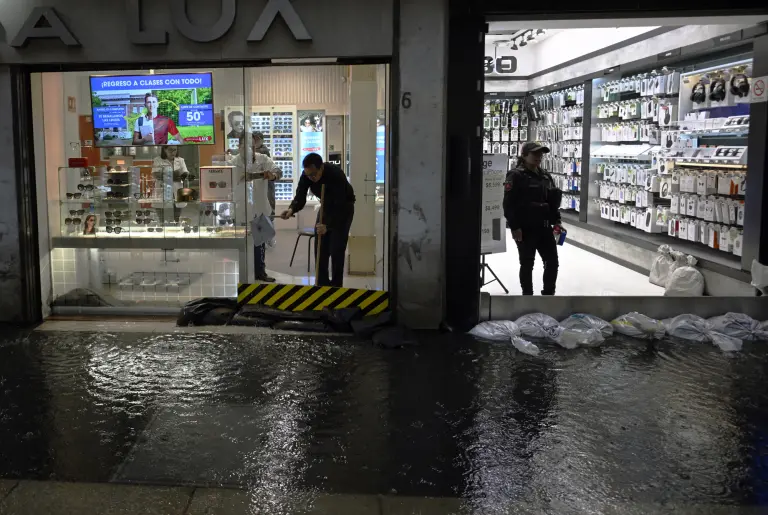Recent Heavy Rains Cause Chaos in Mexico City
Just a year after residents of Mexico City prayed to Tláloc, the Aztec rain god, for relief from scorching temperatures drying up reservoirs, capital dwellers are now pleading for mercy from relentless downpours.
The metropolis, home to approximately 9.2 million people, is experiencing unprecedented rainfall. On the previous Sunday, central Mexico City saw its most copious rainfall since 1952, according to official records.
A Look at the Impact of Climate Change
Experts consulted by AFP attribute these extreme weather variations to global warming, alongside meteorological factors. The city has grown rapidly, with more buildings and fewer green spaces, exacerbated by pollution. Combined with the metropolitan area, which encompasses several neighboring municipalities, this region is home to 22 million people.
Francisco Estrada, head of the Climate Change Research Program at Mexico’s National Autonomous University (UNAM), notes that “very extreme precipitation events” have become “more frequent,” along with prolonged dry spells.
Isidro Cano, a meteorologist and academic, explains that these changes are linked to the greenhouse effect. He also points out that Mexico City is “out of sync with seasons,” causing rainfall to either advance or delay.
Meteorological Factors at Play
Mexico City is situated amidst the Sierra Madre Oriental, a mountain range stretching from the US border to central Mexico. This range warms up during mornings, causing the upper air layer’s temperature to rise.
This results in afternoon water vapor formation, which later condenses into clouds reaching up to nine kilometers that advance over the Valley of Mexico, where the 2,200-meter-high metropolis resides. These clouds also generate electric fields, explaining the powerful thunderstorms startling Mexico City residents.
The surrounding mountains form a favorable system for precipitation associated with this phenomenon. Additionally, rainy waves from the Caribbean Sea traverse the Yucatan Peninsula to central Mexico before heading towards the Pacific.
“These leave a trail of heavy precipitation, reinforced by the orographic factor,” explains Cano. He also warns that this process will likely produce more tropical storms and hurricanes in the coming years due to ocean warming.
Reasons for Inundations
The ancient Mexicans, or Aztecs, built Tenochtitlan on a lake interconnected by multiple rivers. However, over centuries, this lakeside city was replaced with asphalt, increasing the risk of flooding due to minimal groundwater filtration.

Negocios locales inundados en la calle Madero, CDMX.
Estrada cautions that Mexico City’s infrastructure will be inadequate to handle the increased volume of rainwater brought by climate change in the future.
Authorities also attribute the flooding to garbage accumulation in sewers, exacerbated by maintenance issues, causing unpleasant odors in certain areas.
Key Questions and Answers
- What’s causing the extreme weather in Mexico City? Global warming, along with meteorological factors, is attributed to these extreme weather variations.
- How has urban development impacted Mexico City’s vulnerability to flooding? Rapid growth has led to more buildings and fewer green spaces, increasing runoff and flood risks.
- What role do mountains play in Mexico City’s weather patterns? The Sierra Madre Oriental mountain range contributes to afternoon water vapor formation, creating clouds that bring heavy rainfall to the valley.
- Why are there concerns about future flood risks in Mexico City? The city’s infrastructure may be insufficient to manage increased rainfall volumes due to climate change.
- What factors contribute to the foul odors experienced during heavy rains in Mexico City? Garbage accumulation in sewers, exacerbated by maintenance issues, leads to unpleasant odors.






